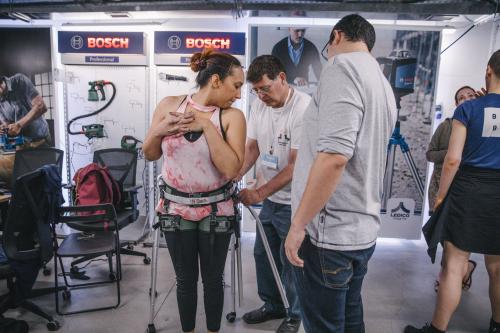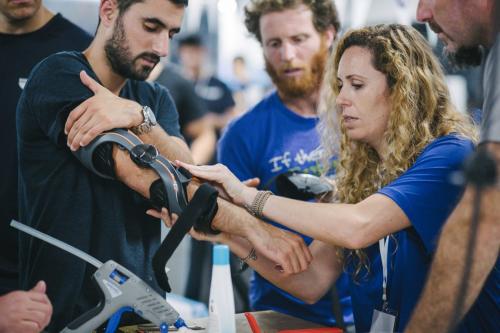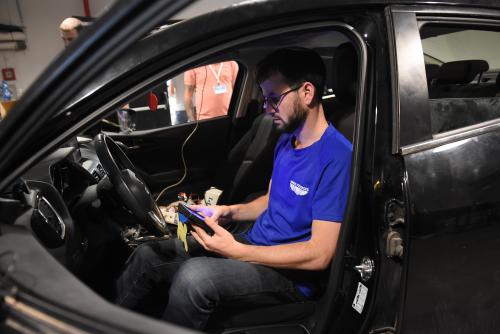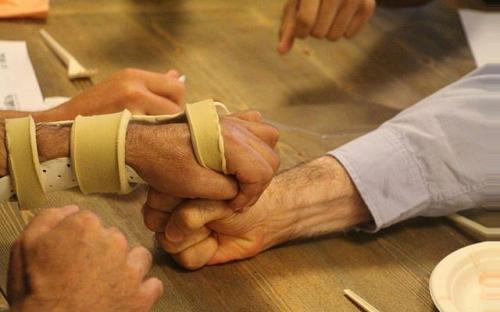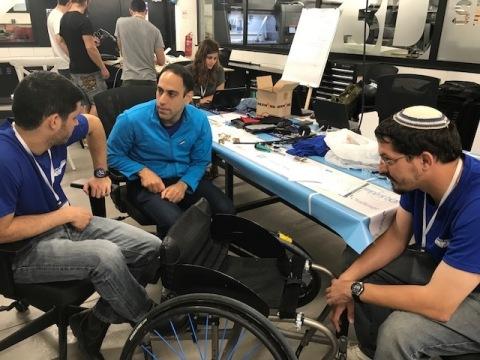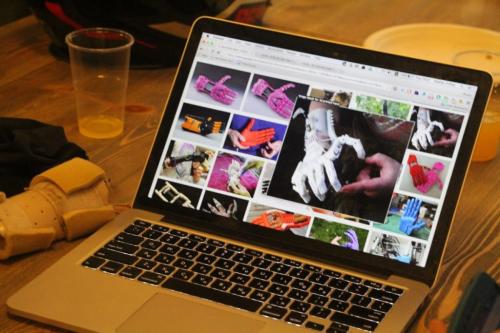First of its kind event seeks to find solutions for challenges faced by wounded veterans
Stratasys (Nasdaq: SSYS), a global leader in additive technology solutions, sponsored and took part in a 72 hour “Makers for Heroes Makea-Thon” event in Tel Aviv. The event sought to develop devices and find solutions for various challenges veterans face as a result of injuries received while in service. Solutions were tailored to participating veterans’ needs, with a variety of professionals sharing skills to address particular challenges faced by each veteran. The event was organized by RESTART, a nonprofit organization that aids veterans with physical disabilities by helping them disengage from the injury cycle and restore their lives. An additional partner, Challenge America, assisted wounded veterans from the U.S. The firstofitskind international MakeaThon brought together wounded veterans from the U.S., France and Israel, with innovation teams using 3D printing and other design and fabrication processes. Teams included representatives from companies including designers, programmers, engineers, physiotherapists, medical doctors, and psychologists. The event was held April 30 to May 2 at Impact Labs, a technological community center for product development, in Tel Aviv. Helping one veteran by finding a solution can often assist many others with similar problems. The event’s goal was to create 3D printed solutions that could be later developed into products for wider use. Following the event, solutions that serve a wider need may be developed for replicable products through the TOM Platform (Tikkun Olam Makers Platform) worldwide. TOM develops and distributes affordable products for people with a range of disabilities. “3D printing is a perfect fit for this type of endeavor because it excels at producing customized and personalized designs,” says Arita Mattsoff, Vice President, Corporate Social Responsibility at Stratasys. “You can quickly and economically 3D print your idea and make design iterations that result in a custom fit for each person.”
“Our team included eight volunteer employees to staff one of twelve innovation teams,” continued Mattsoff. “Stratasys encourages employee engagement for community, which is a key part of the company’s Corporate Social Responsibility (CSR) program and culture. The CSR program engages employees to take part in societal change and help make an impact.” Stratasys volunteers came from various disciplines, including innovation, technology, healthcare, human resources and IT. While the veterans come from different armies, their feelings are universal. Each suffers similar frustrations from their injuries. Henri served in the French Army Patrol and lives with a severe leg injury from service in Afghanistan. He was looking for a solution, such as a cast or other equipment that would help him function better regularly, improve his walking and reduce his constant pain. Zarita, 33, Injured shortly after returning from Afghanistan during extreme training, had a car accident while traveling to her duty station. Before she was injured, Zarita loved to dance, and she wished to recover this favorite form of expression. Due to her conditions, she suffers from dizzy spells and could no longer dance for fear of falling and injuring herself. She needed a stabilizing dance “companion” that would allow her to move freely, yet prevent her from falling. The Stratasys volunteers backed Team Noam, named for a 33yearold Israeli veteran who lost his leg in mortar fire. Noam’s hope was to redesign his wheelchair in a way that would improve the balance for better performance as part of a Paralympics’ tennis team. The event concluded May 2, with exciting solutions created by all 12 of the challenge groups. Team Noam reported that it successfully built a solution to customize Noam’s wheelchair to better balance it for tennis play. It was accomplished by designing a removable counterweight that attaches to the chair when needed. The design mimics the weight distribution of a leg, and attaches to the chair adjacent to Noam’s left leg. The solution was built by a 3D scan of Noam’s sitting position followed by 3D printing several iterations of the design enabling adaptations, using Stratasys FDM thermoplastic, and covering it all with breathing fabric and memory foam. The solution will enable Noam to pursue his dream to better compete in the Paralympics. With the help of a custom support device, developed at the maker event, Zarita is now able to dance again as shown in this video taken at the closing ceremony of the event. In addition, help was found for several other challenges, including a solution for a veteran who sustained a back injury 16 years ago and dreamed of returning to surf. She will now be able to do so thanks to an adapted surfboard. Another who suffered a spinal cord injury and since then has been moving only in a wheelchair, will now be able to stand with the help of a mobile device. Yet another veteran, who suffers from PTSD and anxiety, needed to have help to identifying the moments before an anxiety attack occurs. From the MakeaThon, he received an application for his smart watch that identifies when an attack is approaching and can even help prevent the attack.
Source: https://www.stratasys.com/

